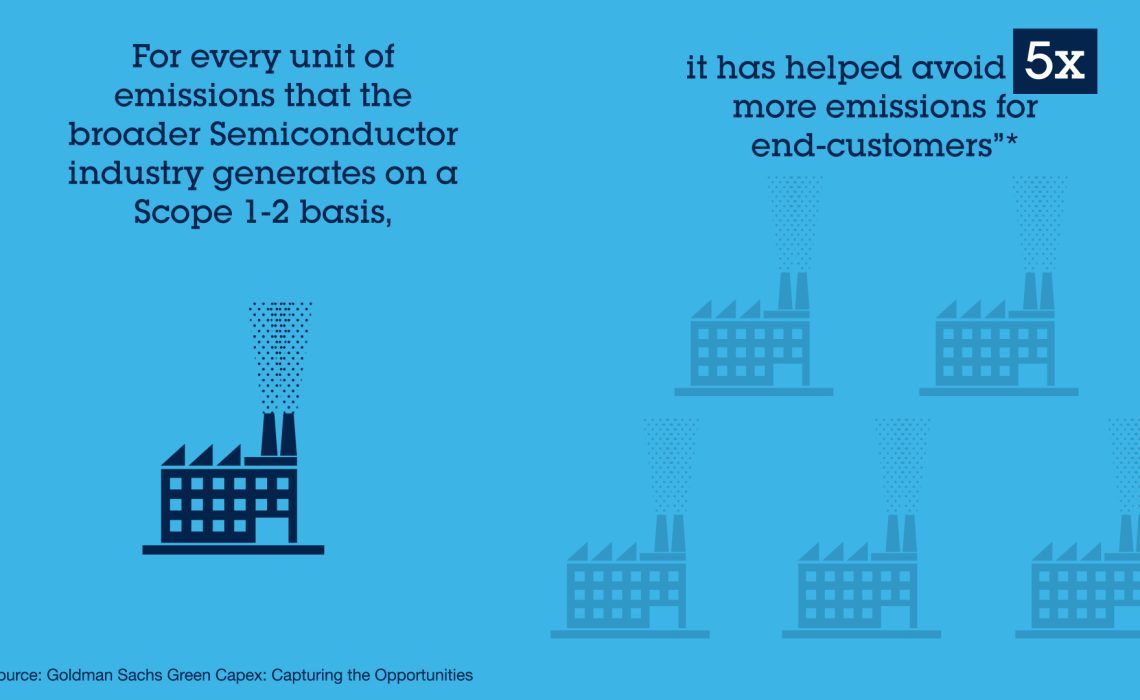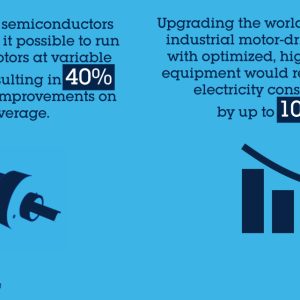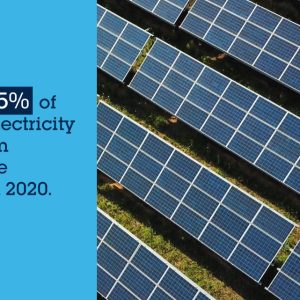For years, semiconductors have been crucial to almost everything in our daily lives. The typical person interacts with hundreds of chips each day in smartphones, computers, automobiles, dishwashers, and much more. The recent shortages of semiconductors in key sectors brought semiconductors to public attention underlining their central role in our lives and as a principal driver of growth in economic productivity.
The role of semiconductors as a key enabler in accelerating society’s transition to greener and smarter systems is less well understood. As our economy switches from fossil fuels to more sustainable energy generation methods, maximizing energy efficiency, while preserving the environment, has become central for driving growth and economic productivity. Semiconductors are a key building block to achieving this. They improve the efficiency of end products and help achieve key sustainability goals. An independent report estimates that
“for every unit of emissions that the broader semiconductor industry generates on a Scope 1-2 basis, it has helped avoid 5x more emissions for end-customers.”
We are living in a time of great change. The shift to electric and smart mobility, improved power and energy management, and the large-scale deployment of the Internet of Things (IoT) and connectivity are driving the transformation of society and industry. Semiconductor technologies are central to this transformation. They are fundamental to the emergence of smarter, more energy-efficient, and more environmentally friendly technologies in homes and cities, in offices and industries, and in e-bikes and electric vehicles (EVs).
They are critical for stepping up EV performance, and making driving cleaner, more connected, and safer through increased autonomy. They enable the uptake of renewable energies and the expansion of the smart electricity grid. They support automation for advanced manufacturing and smarter homes.
In this series of articles, we explain the energy-saving capacity of semiconductor technologies and how they are the heart of the digitalization of devices and systems and more power-efficient technologies that are driving decarbonization for many industries. With the emergence of new materials like silicon carbide, semiconductors are enabling more efficient power electronics. Through IoT and AI, they are enabling digital transformation with smarter devices and systems. Semiconductor technologies, together with the innovative solutions and products of customers and partners, can help address our most pressing energy and climate problems and ensure a more efficient, productive, and sustainable future for the generations to come.
- Introduction: Semiconductors: Accelerating Society’s Transition to Greener, Smarter Systems
- Semiconductors and the Clean Energy Revolution
- How Semiconductor Technology is Accelerating Electrical Vehicle Growth
- Mitigating the Environmental Impact of Data Centers
- Semiconductors: Powering Electric Motors Efficiently
- Redefining the Electrical Grid with Semiconductors
- Using Edge Computing to Save Energy and Enhance Sustainability
- Making Offices, Homes, and Residential Buildings More Energy Efficient with Smart Technology
| At ST, we create technology for a sustainable world, in a sustainable way. As we work toward the future, providing innovative, energy-efficient, and responsible technologies to our customers that allow them to seize opportunities and support a more sustainable world, we are committed to protecting the environment by minimizing our overall footprint. In December 2020, we committed to becoming carbon neutral by 2027. To achieve this ambitious target, we have built a comprehensive program looking at all aspects of our business and operations. Find out more about ST Sustainability here. |




